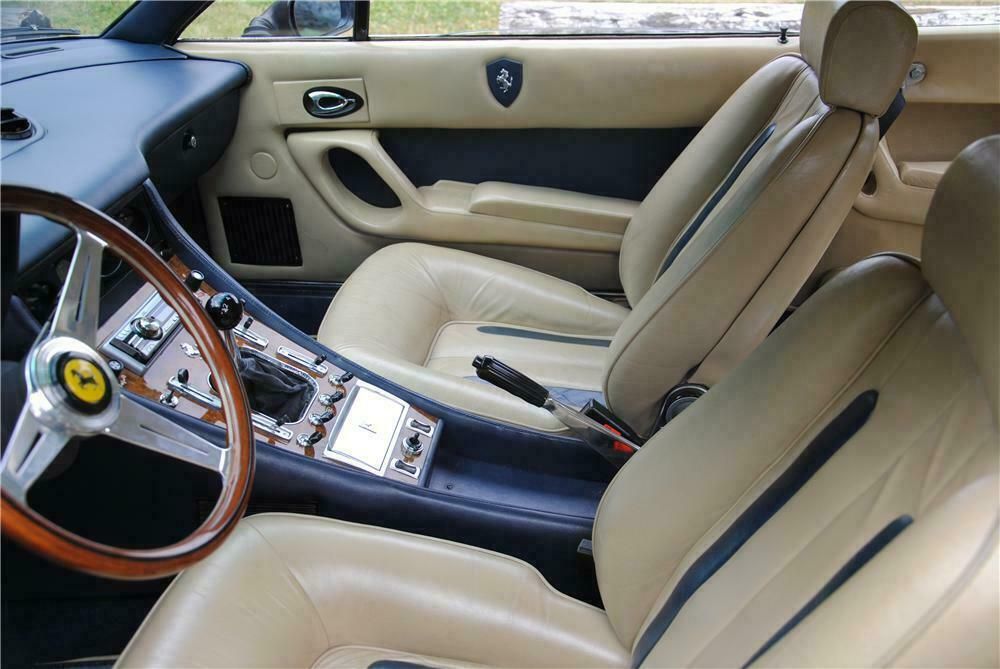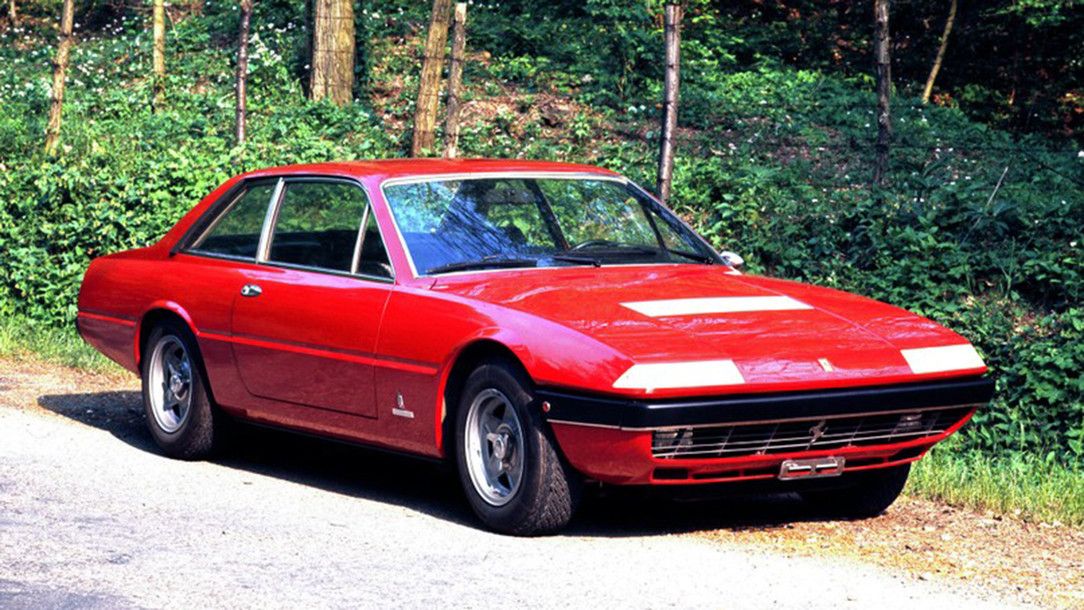It’s true to say that Italian 2+2s of the '70s and '80s were not to everyone’s taste. From enormous maintenance costs to notorious depreciation when new. Ferrari had been synonymous with building fine curvaceous design icons with glorious engines. However, in the early ‘70s, the Italian sports car maker turned its attention to building a Gran Tourer that could accommodate four adults and created the somewhat confusingly named 365 GT4 2+2. This model of Ferrari had, no doubt, disappointed some in the motoring fraternity, however, this intriguing tourer is now becoming a desirable sought-after investment.
Launched in 1972 at the Paris Motor Show, the Ferrari 365 was regarded as one of the quickest four-seater sports cars of its time. Indeed, Ferrari’s new top-of-the-range model was also the Italian car maker's most expensive in the range, even more so than the stunning Daytona of the same year. Moreover, only 524 examples were produced between 1972 and 1976. Ready to lock horns with the world's finest luxury saloons, the 365 inherited Ferrari’s V12 masterpiece upfront. What’s more, it offered speeds of up to 150 mph and 2+2 practicality.
The Italian Gran Tourer was based on the 365 GTC4, which only lasted a year and a half in production. Although the 365 GT4 2+2 was not considered the most desirable of sports cars to come out of the Maranello factory, customers were certainly buying them. As a result, two further iterations of the model followed, namely, the 4.4-liter 400 in 1976 and the 4.8 liter 412 in 1985. However, the Italian four-seater was never sold in North America due to environmental and safety regulations at the time. Furthermore, the total production run of the GT4 2+2 would last seventeen years to become Ferrari’s longest ever running model.
The 365 GT4 2+2 remains the most desirable of the trio and, with values rising, these Gran Tourers are no longer the cheapest way into Ferrari ownership.
The Italian V12 Of The Ferrari 365 GT4 2+2
The 365 GT4 2+2 numeric designation refers to the single-cylinder displacement (365cc), four overhead camshafts (GT4), and the number of seats (2+2). What’s more, it remained Ferrari’s only front-engine car during its production run.
Ferrari squeezed the glorious 4.4 liter quad-cam V12 under the hood which produced 340 horsepower and was similar to the Ferrari Daytona. Bearing in mind the car weighed 3,307 lbs, the powerplant could still propel the Italian GT from 0 to 60 mph in 6.4 seconds and manage to hit a top speed of 155 mph, which was impressive by standards of the day.
Indeed, the engine was the main attribute of this Ferrari. What's more, the howling V12 soundtrack from the four tailpipes was, of course, mesmerizing. There’s no doubt that this sports tourer, was made to cover large distances in comfort and high speed.
In 1976 Ferrari replaced the 365 GT4 2+2 with the 400 GT. Moreover, it was the first Ferrari with an automatic transmission, which to Ferrari enthusiasts was almost sacrilege. However, the 5-speed manual transmission remained an option. The V12 displacement increased to 4,823cc, and power output remained at 340 hp, even though it had gained almost 440 lbs in weight.
In 1979 the 400 acquired electronic injection in place of the two rows of three Weber carburetors. Finally, the arrival of the Ferrari 412 with increased engine size to 4942cc became the first Ferrari to have ABS as standard.
The GT4 2+2 Had Sharp Design With A Luxurious Interior
The 365 GT4 2+2 was designed by Leonardo Fioravanti of Pininfarina. He was also responsible for designing the gorgeous Ferrari Daytona. Although the design was subjective, it’s true to say the razor-sharp 365 design has aged very well.
The 365 was distinguished by its six rear taillights and knock-off alloy wheels. With taut lines and clean edges, the prancing horse was a futuristic and elegant tourer. Furthermore, the three-box design with a steeply sloping windscreen was distinctive at the time. In addition, the folding front headlights finished off the svelte looks of the 365 and were the signature design feature of all ’70s and '80s Italian sports cars.
The cabin of the Ferrari came with full leather, air conditioning, electric windows, and power steering as standard, which was a luxury at the time. What’s more, the expanses of glass gave great visibility, and the spacious interior could accommodate four people.
The Ferrari 400 and 412 were virtually identical to the 365 GT4 2+2, albeit with subtle changes to the exterior and acquiring a plusher interior.
How Much Are The GT4 2+2's Now?
The much-maligned design of the 365 GT4 2+2 didn't receive praise back in the day. However, with appreciation growing for 1980s classics, the Ferrari 365 and 400 models have started to climb.
As with most Ferrari classics, there is some trepidation in covering the financial costs of ownership. Indeed, maintenance and repairs can be somewhat disheartening. On the flip side, the values of these Italian gems are escalating, making cars such as the 363 GT4 2+2 a sensible long-term investment.
According to Classic.com, the average sale price for these Ferrari’s over the last five years is around $70,000. Indeed, a stunning example of the 365 GT4 2+2 sold at RM Sotherby’s recently for €74,750 (approx.$84,617).




